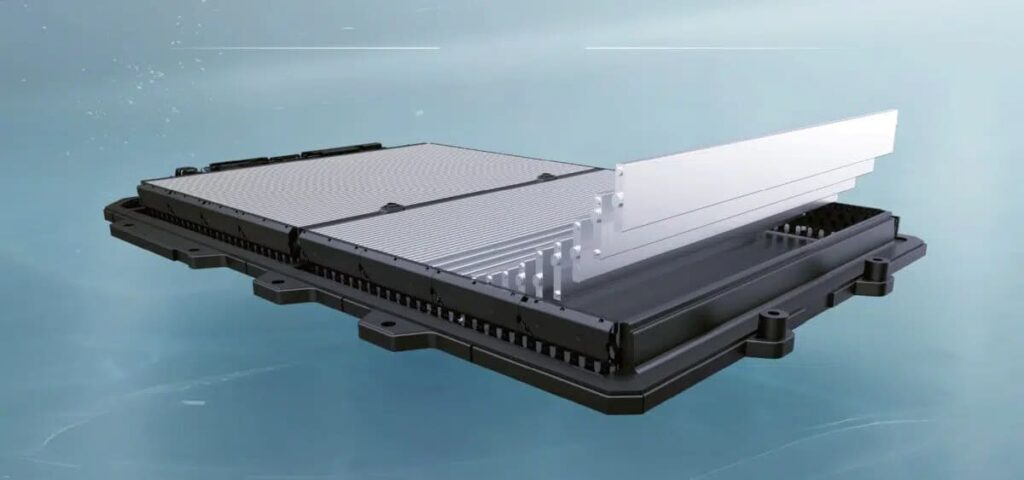The future of electric vehicles just got brighter thanks to BYD, the Chinese automotive giant that’s shaking up the industry with an innovation set to rival even the best-known names in the market. BYD, already a major player in the global electric vehicle (EV) race, is set to unveil its groundbreaking Blade battery, promising to redefine what we thought was possible in terms of range and charging speed. This new battery technology could change the way we view EVs and their limitations—especially when it comes to that ever-present concern: how far can we really go?
A Revolutionary Battery with Multiple Advantages
BYD’s new Blade 2nd generation battery is not just an improvement on existing technology; it’s a quantum leap forward. The specifications of this battery are nothing short of impressive and could have significant implications for the future of electric vehicles. Here’s a quick breakdown of what makes this new battery stand out:
- Ultra-fast charging: The Blade battery can go from 10% to 80% in just 11 minutes. Yes, you read that correctly—just 11 minutes for an 80% charge, making long wait times a thing of the past.
- Increased energy density: With a 27% boost in energy density, this new battery can store more power while maintaining a relatively compact size. It’s rated at 190 Wh/kg, compared to the previous 150 Wh/kg.
- Long-range capabilities: The new Blade battery could potentially give vehicles up to 850 km of range based on the WLTP cycle. This is a game-changer in a market where range anxiety remains one of the biggest barriers to widespread adoption of electric cars.
- High discharge rate: With a 14C discharge rate, this battery is designed to power high-performance motors, which is ideal for high-speed vehicles.
This battery isn’t just an incremental improvement—it sets a new benchmark for the industry. BYD’s Blade battery could very well become the gold standard in the EV market, offering both efficiency and performance in ways that haven’t been seen before.
Major Implications for the Electric Car Market
The impact of this new Blade battery goes far beyond just BYD’s own vehicles. One of the key challenges faced by BYD in the past has been the charging speed of its electric cars, which has often been slower compared to competitors like Tesla. Existing models from BYD required anywhere from 25 to 40 minutes to reach 80% charge, but with the new Blade battery, the company will leap ahead with a charging time reduced to just 11 minutes. This will place BYD at the forefront of the industry when it comes to quick charging, meeting one of the most significant concerns for electric vehicle owners.
The increase in range is equally important. With an estimated 850 km range on a single charge, BYD’s electric vehicles could surpass even the range of luxury models like the Tesla Model S and Lucid Air. This could ease the range anxiety many consumers face and open the door to more widespread adoption of EVs.

An Ambitious Strategy to Conquer the Global Market
But BYD’s ambitions don’t stop with its own cars. As one of the world’s leading battery manufacturers, the company is also exploring ways to sell this innovative battery technology to other automakers. Already, giants like Tesla and Stellantis are using BYD’s batteries in some of their models. By offering this next-generation battery to other companies, BYD could play a key role in accelerating the global transition to electric mobility.
The first vehicle to feature the new Blade battery will be the Yangwang U7, a high-end sedan designed to directly compete with Tesla’s premium offerings. This marks a strategic push by BYD into the luxury electric vehicle market, where the company aims to capture a higher-margin segment.
Significant Economic and Environmental Implications
Beyond the performance improvements, BYD’s new battery could have a major impact on the cost of electric vehicles. Batteries currently make up around 40% of the total price of an electric car, but with the improved energy density of the Blade battery, manufacturers may be able to reduce the size and weight of the batteries, which could help lower production costs. These savings might ultimately be passed on to consumers, making electric cars more affordable.
From an environmental standpoint, the new battery could reduce the carbon footprint of EVs by improving energy efficiency. Additionally, the LFP (Lithium Iron Phosphate) technology used in the Blade battery is less dependent on rare and costly materials like cobalt, which reduces the environmental and geopolitical risks associated with battery production.
A Major Challenge for European and American Competitors
BYD’s technological leap puts Western automakers on notice. While companies like ACC in France struggle to scale up battery production, BYD has proven its ability to innovate quickly and bring these advancements to market. The introduction of the Blade battery could force European and American companies to ramp up their efforts to remain competitive, both in terms of technology and cost efficiency.
This advancement could potentially shift the global electric vehicle market, with BYD leading the charge. The company’s ability to produce mass-market electric cars at competitive prices, coupled with cutting-edge battery technology, might give it the edge it needs to challenge the dominance of Tesla and other established players.
Conclusion
BYD’s Blade 2nd generation battery is set to revolutionize the electric vehicle market. With improvements in charging speed, range, and energy density, this new technology addresses many of the key concerns that have slowed the adoption of electric cars. By offering this technology to other automakers, BYD could help accelerate the global shift toward electric mobility, making the future of transportation cleaner, faster, and more efficient. If BYD’s promises hold true and they can scale this technology, the transition to electric vehicles may happen faster than we thought.






